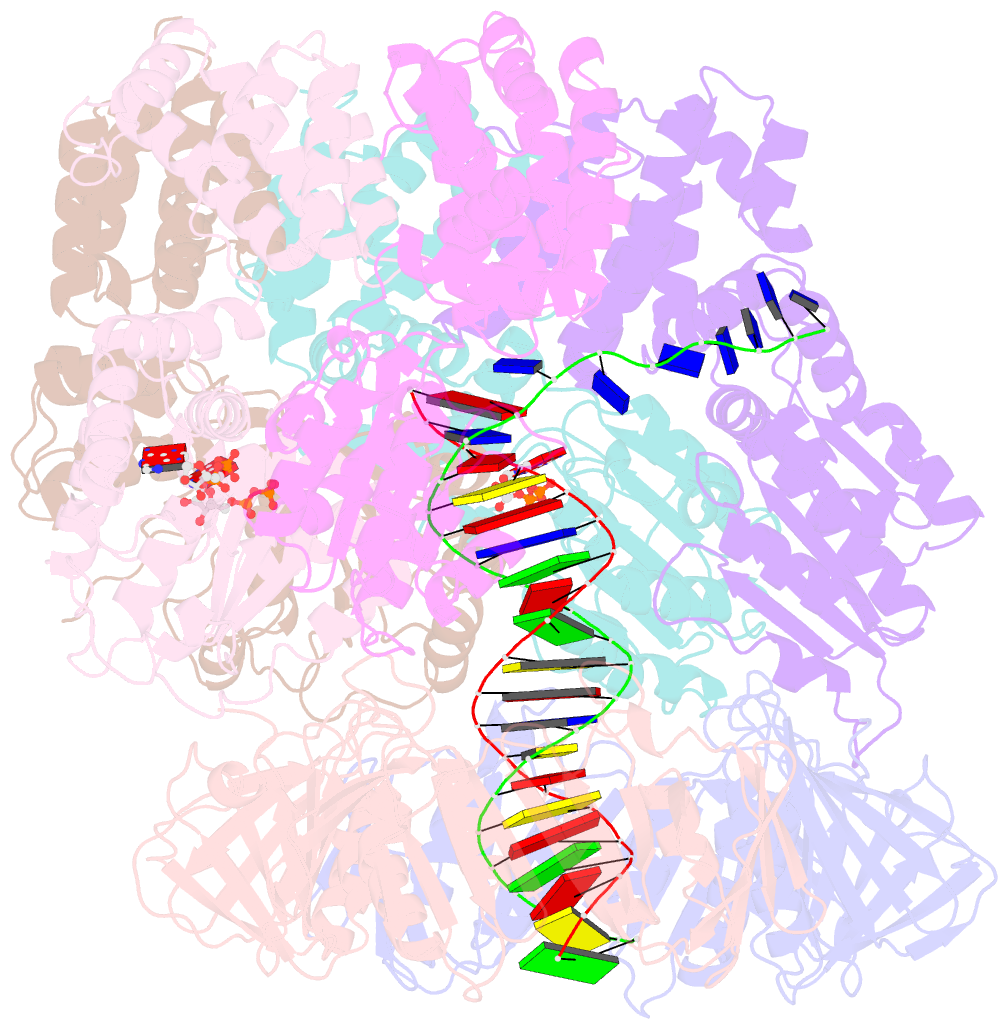Summary information and primary citation
- PDB-id
- 8var; SNAP-derived features in text and JSON formats;
DNAproDB
- Class
- replication-DNA
- Method
- cryo-EM (3.9 Å)
- Summary
- Structure of the e. coli clamp loader bound to the beta clamp in a closed-dna2 conformation
- Reference
- Landeck JT, Pajak J, Norman EK, Sedivy EL, Kelch BA (2024): "Differences between bacteria and eukaryotes in clamp loader mechanism, a conserved process underlying DNA replication." J.Biol.Chem., 300, 107166. doi: 10.1016/j.jbc.2024.107166.
- Abstract
- Clamp loaders are pentameric ATPases that place circular sliding clamps onto DNA, where they function in DNA replication and genome integrity. The central activity of a clamp loader is the opening of the ring-shaped sliding clamp, and the subsequent binding to primer-template (p/t)-junctions. The general architecture of clamp loaders is conserved across all life, suggesting that their mechanism is retained. Recent structural studies of the eukaryotic clamp loader Replication Factor C (RFC) revealed that it functions using a crab-claw mechanism, where clamp opening is coupled to a massive conformational change in the loader. Here we investigate the clamp loading mechanism of the E. coli clamp loader at high resolution using cryo-electron microscopy (cryo-EM). We find that the E. coli clamp loader opens the clamp using a crab-claw motion at a single pivot point, whereas the eukaryotic RFC loader uses motions distributed across the complex. Furthermore, we find clamp opening occurs in multiple steps, starting with a partly open state with a spiral conformation, and proceeding to a wide open clamp in a surprising planar geometry. Finally, our structures in the presence of p/t-junctions illustrate how clamp closes around p/t-junctions and how the clamp loader initiates release from the loaded clamp. Our results reveal mechanistic distinctions in a macromolecular machine that is conserved across all domains of life.





